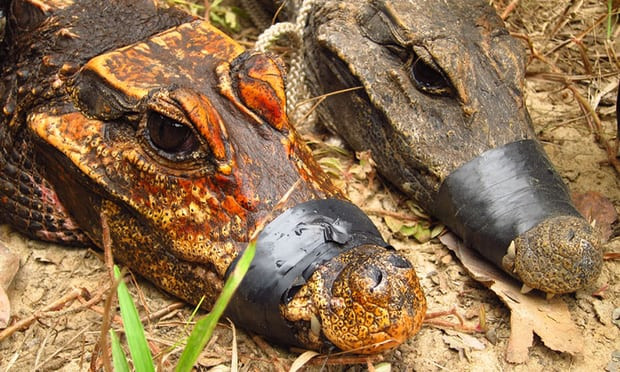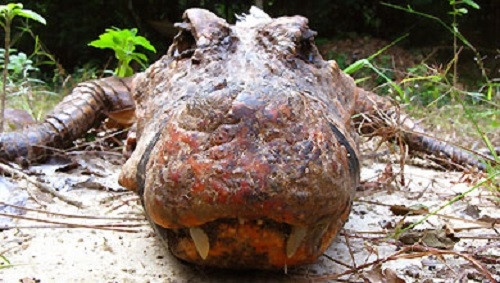Gabon's mutant orange crocodiles live in the dark and feast on bats
They owe their colour to bathing in bat faeces all day.

In 2008, archaeologist Richard Oslisly was exploring a cave in Gabon when he stumbled across some strange looking crocodiles.
Oslisly was not an expert on crocodiles. He was initially looking for signs of prehistoric human activity in an underground cave located in the remote region of Abanda in Gabon when he discovered the reptiles in one of the cave's rooms, which was filled with water.
Intrigued as to how the species had adapted to the darkness, Oslisly sought the help of other scientists to learn more about the caves' inhabitants. They were most likely African dwarf crocodiles, measuring an average of about 1.5 metres.
In 2010, he came back to Abanda with cave scientist Olivier Testa and crocodiles expert Matthew Shirley. They caught the first specimen and observed its distinct bright orange colour unlike other crocodiles.
The research team has now found about 30 specimens in the cave with 10 of them orange. They suspect more crocodiles have remained hidden in the cave.
Upon studying them, they discovered it was not just the crocodiles' skin pigment that was different: they had mutated from the African dwarf crocodiles.
"We could say that we have a mutating species, because [the cave crocodile] already has a different [genetic] haplotype," Oslisly told The Guardian. "Its diet is different and it is a species that has adapted to the underground world."
Oslisly and his colleagues think the younger crocodiles are able to leave the cave through multiple openings because they are smaller in size.
However, once they reach a certain size, they become trapped in its rooms and must feed on whatever can be found in the cave to survive.
"They are somehow in their own prison," Oslisly said. "They eat bats that live in these caves by the tens-of-thousands and also crickets that swarm the walls."
Their unusual orange colour appears to be a result of living in a mix of water and bat faeces (guano), according to the research team.
African dwarf crocodiles are nocturnal animals that hunt at night. While the cave specimens seem to live in the same way as their outdoor cousins, Oslisly, Testa and Shirley suggest that the crocodiles from the cave are genetically different from the three other species of dwarf crocodiles found in Gabon.
A set of genes (called haplotype) found in a crocodile from the cave did not correspond to those found in any of its cousins in the outside world.
The split dates back to thousands of years ago, which raises interesting questions about the cave inhabitants' survival: How and where do the cave specimens breed, for instance.
Crocodiles breed during the wet season and then need vegetation in order to nest their eggs, so if the crocodiles found in the Abanda cave bred in the cave itself, it would be a scientific first.























